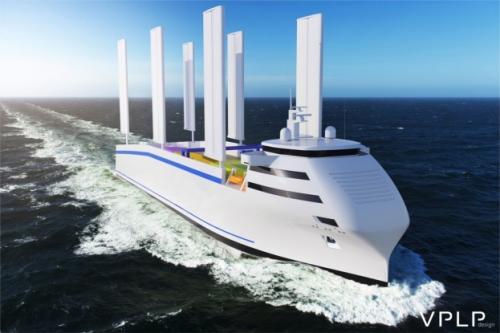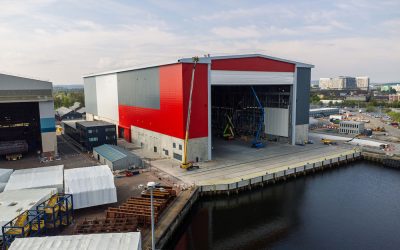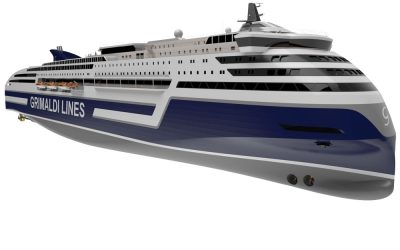By Gavin Allwright
Secretary General, International Windship Association
Recent announcements on fuel subsidies have, for me, brought to the fore issues surrounding the way subsidies are introduced and their impacts on the decarbonisation pathway’s they take us down in the shipping industry. My economics professor always hammered on that subsidies indicated market failures and should always be a temporary, last resort if you believed markets could deliver a level playing field. That always led to an energetic debate and one that is picking up steam in the industry, though currently solely through the lens of the pros and cons of imposing carbon levies.
Maritime subsidies come in many forms; direct ones are obvious such as tax exemptions on fuel, favourable tonnage tax regimes, R&D funds, tax credits for investments or subsidies to hold down the cost of employing seafarers. Indirect subsidies come in the way of support for maritime clusters, port infrastructure development, training etc. These are relatively transparent (though accurate data is often hard to find) and many nations deliver these.
These distort the shipping market to an extent, but the few billions spent here are quite peripheral in the grand scheme of things, and the strategic nature of shipping and heavy capex burden is a justification for these in many people’s minds, though the question of their effectiveness is still an open one.
The far more impactful subsidies are the indirect, externalised ones around fossil fuels. The externalisation of climate costs and the decarbonisation agenda is fuelling the debate that is currently raging in the industry. But are we seeing the whole picture? The external costs of our current fuel mix also extend to hundreds of billions per year in health costs and lost productivity, pollution issues and the security costs of securing fuel reserves along with the opportunity costs of not investing these resources in productive areas of the economy.
Fossil fuel subsidies
There are numerous estimates around the levels of subsidy for fossil fuels, but let’s go with the median estimate made by the IMF at US$4.3 trillion on worldwide energy use equivalent to between US$200-300 per tonne of oil, a not insignificant amount and one that doesn’t include security cost estimates, the full lifecycle assessment of fuels, opportunity costs or the longer-term climate impacts, but a useful indicator nonetheless. With the shipping industry consuming 300 million tonnes of fuel per year, this is a very substantial amount, and the carbon levies being proposed from the EU Emissions Trading System (US$180/ton) to Trafigura’s proposal (US$750-900/ton) bear this out by factoring in the climate impact alone at a high level.
In recent weeks, we have seen calls to subsidise alternative fuel development in the UK for example, with Blue Hydrogen.
Now, I don’t single out any alternative fuel in particular, but this one has been making the news and the discussion here bears out some of the contradictions. The argument goes that existing fossil fuels are very cheap and available but new fuels face extremely high barriers to entry costs and thus new subsidies will be required to make them cost competitive.
OK so far, however most alternative fuels will likely be derived from fossil fuel over the coming two decades and that fossil fuels themselves are extremely heavily subsidised and have been so for the last century or more. Thus, the energy sector is effectively needing subsidies to compete against its own existing heavily subsidised product line.
Assisting new technologies
The answer is to precisely assess the impacts of all energy sources and then remove all subsidies, while assisting new technologies and fuels to a degree with the barriers to entry that a century of fossil fuel subsidies have created. Is that likely to change anytime soon? Well, the introduction of a carbon levy would go some way to balancing the playing field and one that is ring fenced and brought back into the industry in way of grants and low-cost loans for the installation of decarbonising technologies, as we saw with the Norwegian NOx fund, would magnify that impact.
Few would dispute the need for R&D support and many would also agree with support for installations, but both of these also fall foul of the question of who pays and where the proceeds are spent. Developing nations rightly point out they will be expected to pay high prices for fuel but almost all R&D and technology developers come from developed countries, another subsidy quandary.
Renewable energy
This all brings me to my favourite subject, direct wind propulsion and how primary renewable energy fits into this equation. Wind propulsion systems can of course benefit from R&D subsidies and subsidised installation costs but currently receive far less than alternative fuel support, even though it has the potential to deliver up to a third of the fleet energy requirement by 2050s. It is a zero-emissions energy source that is free and non-commoditised, delivered without the need for infrastructure, production, transport, storage or exploration subsidies. So, if other energy sources are receiving subsidies for these, how do you level that playing field?
On subsidies gone awry (but in wind’s favour), in the late 19th century, in an effort to challenge British maritime dominance, many countries paid ship building tonnage bounties to encourage steam and steel. France though paid high bounties for sailing vessel building too, and also introduced operational bounties paid per 1000 nautical miles sailed. This led to fewer steamships being built and sail cargo captains taking more circuitous routes to claim the maximum bounty available, ending with a depleted treasury and delaying the transition to steam.
Leasing model?
So, should shipping companies adopting wind propulsion be handed bags of money equivalent to the subsidies deployed elsewhere? I am sure there would be few to turn that down, but is it likely? Carbon levies will help redress the balance but a fair, equitable distribution of proceeds to all propulsion energy sources will be required. If we created a ship-based energy market where each energy source was paid per kWh with technology companies leasing their technologies to the ship platform that could be an interesting longer-term solution.
In the meantime, whenever we hear the word ‘subsidy’ we should pause and reflect on the market ‘failure’ that is exposing and question whether these remedies are both effective and will promote an ‘energy-centric’ transition rather than a narrower, and more costly ‘fuel-centric’ decarbonisation pathway. Winding up subsidies across the board or ensuring subsidies level up all energy sources, including ‘Wind Up’.






